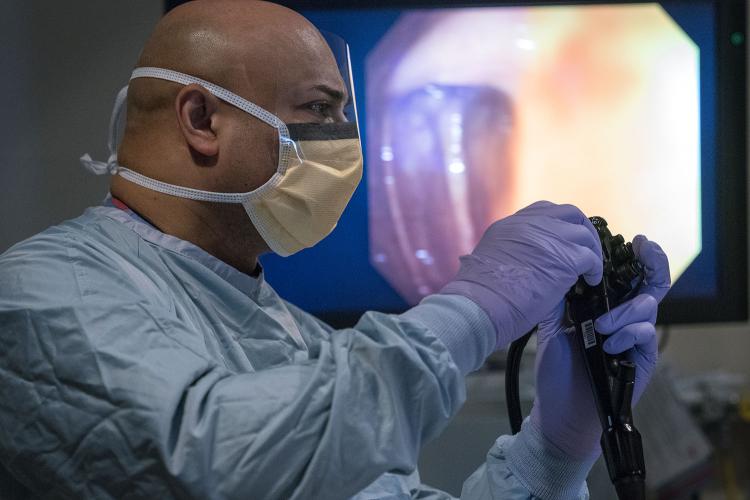
A decade after JPS Health Network leaders reached their goal of becoming the first and still only Level I Trauma Center, they continue to look for ways to get even better at providing top-notch care.
Earning that designation was years in the making, according to surgeon Dr. Raj Gandhi. But the work didn’t end when doctors, nurses, administrators and countless other JPS team members were able to reach that goal.
“There are more than 300 criteria Level I Trauma Centers have to reach to earn that name,” Gandhi said. “But they don’t only have to reach that level, they have to stay there and maintain those high standards. Our work is never really done if we want to keep what we’ve achieved. Beyond that, we still have goals to reach. There are always places any institution can get better, so it’s important to have goals and continue to grow.”
Cassie Lyell, Executive Director of Trauma Services, said one of the reasons JPS is so successful at growing and perfecting its trauma care is because the team is so collaborative.
“Trauma is a team sport and everyone at JPS plays a part in the trauma center,” Lyell said. “The goal of the trauma team is to respond to the needs of patients during the worst times of their lives. In the next 10 years, we will continue to adapt to the needs of our patient population and our community through implementation of evidence supported practices into clinical programs as well as the discovery of new evidence through research.”
By working together, Gandhi said JPS providers in Trauma and other specialties can grow their skills to improve care for Tarrant County residents – and to share with doctors and nurses around the globe.
Our work is never really done if we want to keep what we’ve achieved.
“Expanding research is definitely a very important thing for us,” Gandhi said. “We’ve recently been able to secure some grant money for important work we’re doing to stop intimate partner violence and understand how to treat drug and alcohol dependency. We’d like to be able to do a lot more of that, bringing multiple disciplines together to hone our skills and processes.”
One area in which JPS has been working to expand trauma services is by expanding wound care including treatment for some burns.
Heather Schuster, a physician assistant at JPS who specializes in wound care, said it’s important to see patients through until their completely recovered in order to offer a complete range of trauma services.
“Trauma care doesn’t end when the patient’s life is no longer in danger,” Schuster said. “It ends when the healing process is complete and the person’s life has been returned as closely as possible to what it was before they were injured as possible. Sometimes that process takes months, but we’re here with them every step of the way.”
Schuster said JPS has begun ramping up its burn care offerings over the past year or so.
For the past decade, JPS team members have taken pride in the fact that the health network offers the only Level One Trauma Center in Tarrant County. Gandhi said, while leaders of other institutions have expressed interest in seeking Level I Trauma Center status, he can’t predict if it will happen in the next decade.
“It’s not an easy thing to do,” Gandhi said. “It’s like putting together a giant jigsaw puzzle with thousands of pieces. But it doesn’t matter if there is another Level I Trauma Center in Fort Worth. There will always be plenty of patients, and there will always be a need for top quality trauma care. The bottom line is that we built this Level I Trauma Center to create excellent outcomes for patients. That’s what we’re doing, and it’s what we’ll continue to do.”
